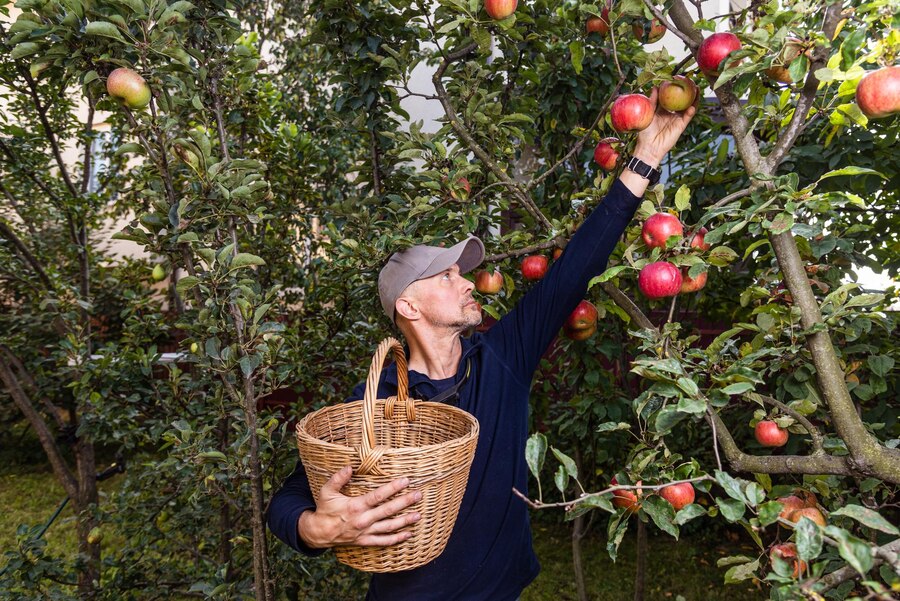Growing apple trees in your own garden is a delightful journey that connects you deeply with nature’s beauty and bounty. Whether you have a spacious backyard or a cozy urban space, the prospect of harvesting fresh, crisp apples right from your own trees is immensely rewarding. It’s not just about growing fruit; it’s about nurturing a living ecosystem that enriches your surroundings and provides wholesome produce for your table.
Choosing the Right Apple Varieties
Selecting the right apple varieties is crucial to ensure a successful harvest that meets your taste preferences and climate conditions. Consider factors such as climate compatibility and pollination requirements. Different apple varieties thrive in different climates—some are more suited to colder regions, while others flourish in warmer climates. It’s essential to choose varieties that will thrive in your specific growing conditions to maximize your chances of a successful harvest.
Planting and Caring for Apple Trees
Before planting your apple trees, carefully choose a suitable location that receives full sun and has well-drained soil. Adequate sunlight is essential for healthy growth and fruit production. When planting, dig a hole that is twice as wide and deep as the root ball. Position the tree so that the graft union is above the soil line, backfill with soil, and water thoroughly. Mulch around the base of the tree to retain moisture and suppress weeds.
Pruning and Training Your Apple Trees
Pruning plays a vital role in shaping the structure of your apple trees and promoting optimal fruit production. It’s best to prune during the dormant season, typically in late winter or early spring. Remove dead, damaged, or crossing branches to improve air circulation and sunlight penetration throughout the canopy. Training techniques such as espalier (training against a wall or trellis) or open center pruning help create a strong framework and encourage fruit-bearing branches.
Pest and Disease Management
Preventing pests and diseases is essential for maintaining the health and productivity of your apple trees. Practice integrated pest management by regularly monitoring for common pests like aphids or codling moths. Implement organic pest control methods such as beneficial insects or horticultural oils to manage infestations effectively. Additionally, apply fungicides as needed to prevent diseases such as apple scab or powdery mildew. Proper pruning and spacing of trees also help improve air circulation and reduce disease risks.
Harvesting Your Apples
The moment of harvesting your apples is truly rewarding after months of nurturing and care. Apples are ready to harvest when they have developed their characteristic color and firmness. Each apple variety has its own harvesting window, so refer to specific guidelines for optimal picking time. Handle apples gently to avoid bruising, and store them in a cool, dark place with good ventilation. Some varieties store well in the refrigerator, while others are best enjoyed fresh off the tree.
Conclusion: Enjoying the Fruits of Your Labor
Growing your own apple orchard is a journey that not only yields delicious fruit but also fosters a deeper connection to the natural world. It teaches patience, attentiveness, and appreciation for the cycles of growth and harvest. Whether you’re a novice gardener or an experienced enthusiast, cultivating apple trees enriches your life with beauty, nourishment, and a sense of accomplishment.







